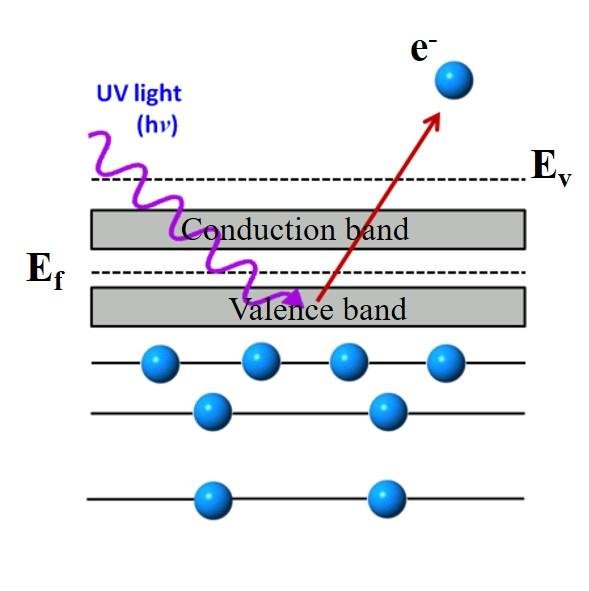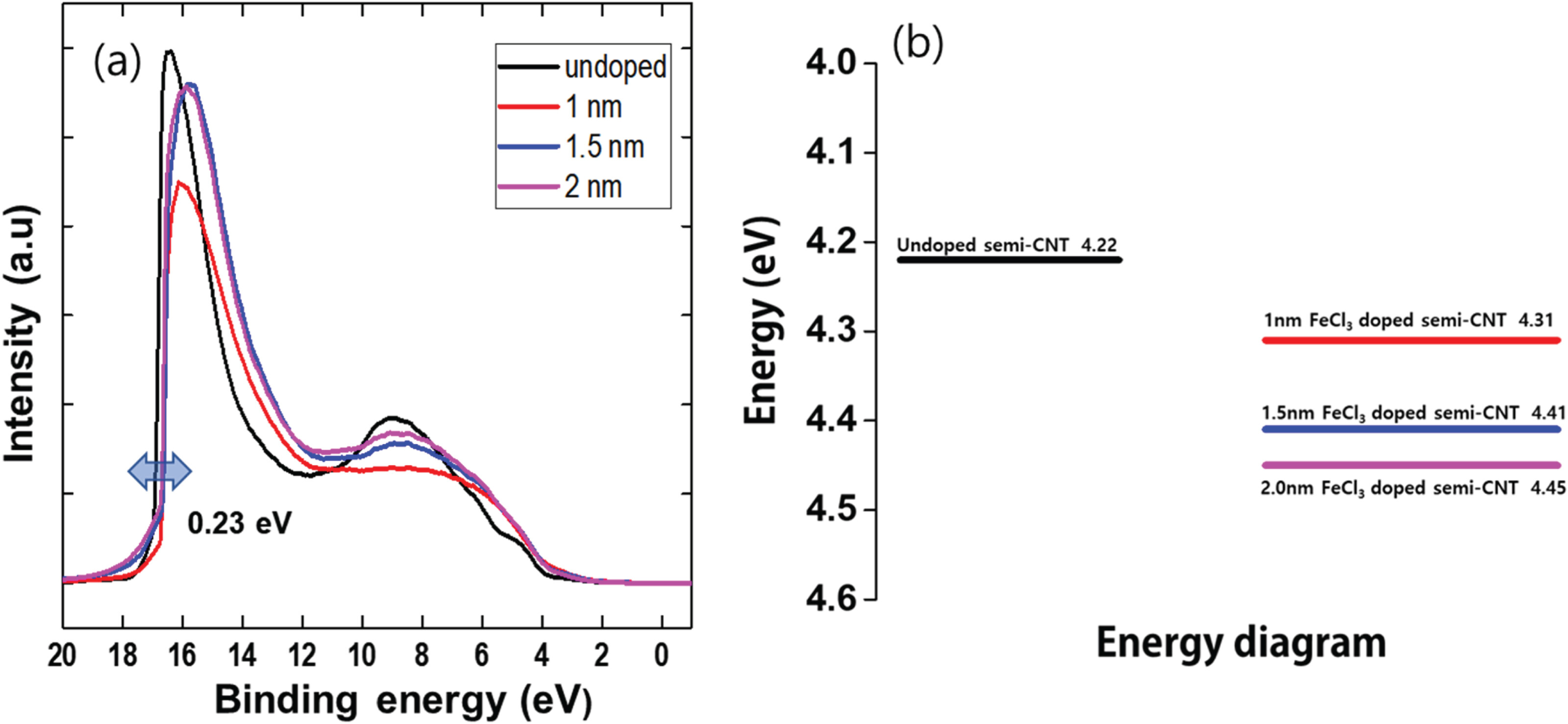Ultraviolet Photoelectron Spectrometer (UPS) Analytical Service
- Determining HOMO levels and work functions for material design in OLEDs, organic solar cells, and OFETs.
- Investigating how doping affects charge carrier injection behavior.
- Comparing the valence band maximum and Fermi level to assist in identifying n-type or p-type conductivity.
- Studying surface states in novel 2D materials such as MoS₂ and black phosphorus.
- Combining XPS and UPS to construct comprehensive band diagrams for heterojunctions.
- Assessing charge injection/transport barriers to support interface engineering in devices.
- Monitoring work function changes to assess the effects of annealing, air exposure, or solvent treatment on surface electronic structures.
- Probing the valence electronic density of states on metal/oxide catalyst surfaces to elucidate catalytic mechanisms.
Ultraviolet Photoelectron Spectrometer (UPS) Analytical Service is specifically designed to investigate the valence electronic states at the surface of solid or thin-film materials, providing key electronic parameters such as work function, highest occupied molecular orbital (HOMO) levels, valence band maximum (VBM), and their relative alignment to the Fermi level.
In research areas such as functional materials, electronic devices, organic semiconductors, and surface/interface science, the band structure and work function are essential parameters that directly determine a material’s electronic behavior and device performance. While traditional X-ray Photoelectron Spectroscopy (XPS) is effective for analyzing elemental composition and chemical states, it lacks the resolution and capability to characterize critical valence band features and surface-level electronic properties.
UPS is a high-sensitivity surface analysis technique specifically tailored for probing the valence band structure and surface work function. With its exceptional energy resolution in the low binding energy range, UPS enables the precise determination of HOMO levels, Fermi level alignment, work function, and band offset—making it an indispensable method for studying charge injection, interface energy level alignment, and electronic transport properties.
MtoZ Biolabs provides Ultraviolet Photoelectron Spectrometer (UPS) Analytical Service to focus on the study of the electronic structure characteristics of the material surface, helping researchers to deeply understand the energy level arrangement, charge transfer mechanism and surface state behavior of the material, and promoting breakthroughs in basic research and the implementation of industrial applications.
Technical Principles

María J Hortigüela. Irurueta G O. X-ray Photoelectron Spectroscopy A surface characterization technique. 2019.
UPS is based on the photoelectric effect induced by ultraviolet excitation. When a vacuum ultraviolet (VUV) light source irradiates the sample surface, electrons in the valence band absorb energy and escape, generating a stream of photoelectrons. By measuring the kinetic energy distribution of these photoelectrons, their binding energies can be calculated, thereby enabling the acquisition of the valence band spectrum of the material. Analysis of the electron density distribution within the spectrum allows for the determination of work function, estimation of the HOMO level and the valence band maximum (VBM), and inference of the density of states (DOS). With a probing depth of approximately 1–2 nm, UPS offers exceptional surface sensitivity, making it well-suited for characterizing thin films, heterostructures, and molecular adsorption layers.
Analysis Workflow
The analysis steps of Ultraviolet Photoelectron Spectrometer (UPS) Analytical Service are as follows:
1. Sample Preparation
Tailored cleaning and pretreatment protocols are applied according to the material type.
2. Vacuum System Loading
Samples are introduced into an ultra-high vacuum chamber to eliminate interference from stray gas molecules.
3. Ultraviolet Excitation and Photoelectron Collection
The sample is irradiated using an ultraviolet light source. A high-energy resolution analyzer measures the kinetic energy of the emitted electrons to generate the full UPS spectrum.
4. Data Fitting and Parameter Extraction
First-derivative fitting is used to determine the HOMO position and the valence band maximum (VBM). The work function is calculated using the secondary electron cut-off region.
5. Report
A comprehensive analysis report is provided, including spectral data, raw data, energy level analysis, and comparison with reference materials.
Applications
Ultraviolet Photoelectron Spectrometer (UPS) Analytical Service supports a wide range of studies in electronics, optoelectronics, and surface/interface science. Typical applications include:
Energy Level Characterization of Organic Semiconductors
Characterization of Inorganic Semiconductors and Oxide Materials
Interface Energy Level Alignment and Band Structure Construction
Evaluation of Functional Coatings and Nanofilm Stability
Electronic Structure Analysis of Catalysts
FAQ
Q. What Types of Materials Can be Analyzed Using UPS?
UPS is applicable to a broad range of materials, including but not limited to organic semiconductors (e.g., PTAA), inorganic semiconductors (e.g., TiO₂), metal thin films, oxides, electrode materials, two-dimensional materials, and functional coatings such as black phosphorus.
Q. Is UPS Particularly Sensitive to Surface Cleanliness?
Yes, UPS is highly sensitive to surface conditions. Surface contamination—such as organic residues, adsorbed water, or carbon oxides—can significantly impact the accuracy of work function and HOMO level measurements.
Recommendations: Use freshly prepared or vacuum-stored samples. Ensure surfaces are dry and free from oils or salts. For organic films and hydrogel-based samples, drying or lyophilization is recommended.
Case Study
In this study, UPS was employed to analyze the surface electronic structure of carbon nanotube (CNT) thin films before and after ferric chloride (FeCl₃) doping. The focus was on changes in the work function and shifts in the HOMO energy level. UPS results showed a significant increase in the work function after FeCl₃ doping, indicating electron transfer from CNTs to the dopant, consistent with a p-type doping effect. Simultaneously, the HOMO level shifted closer to the Fermi level, further confirming modulation of carrier concentration.

Park, N. H. et al. Journal of Information Display. 2022.
How to order?







